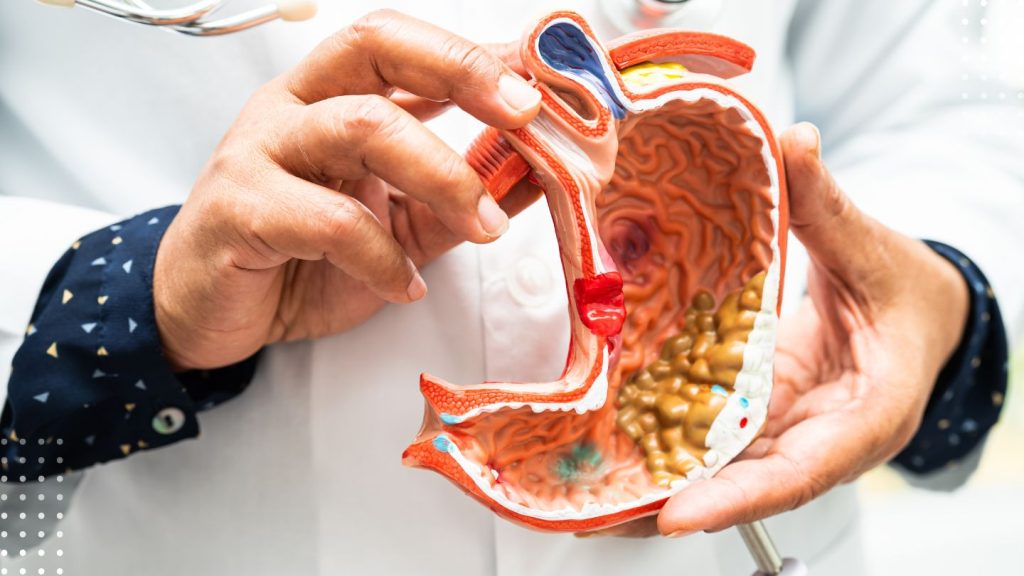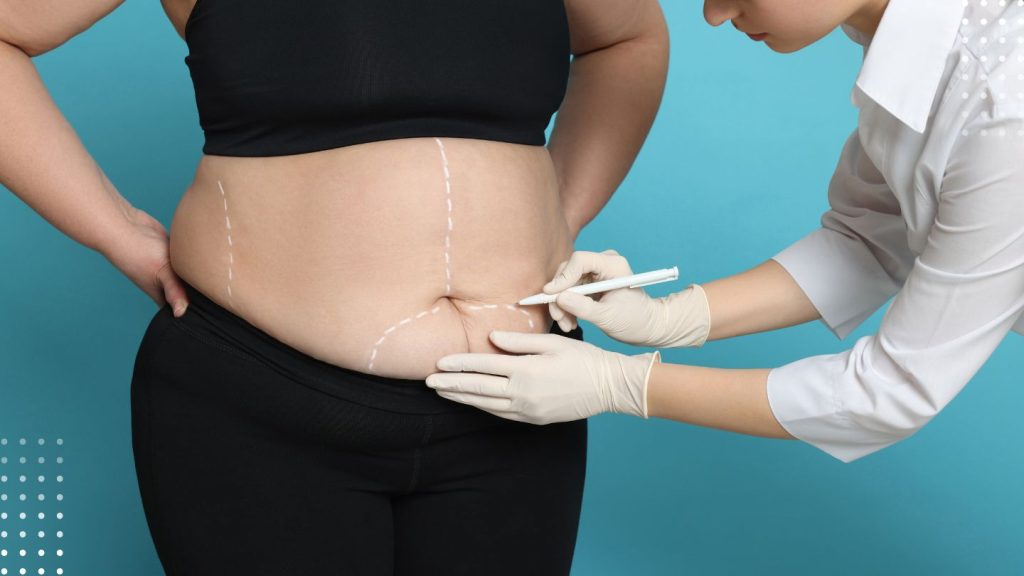
How Does Gastric Sleeve Work? Understanding the Weight Loss Procedure
Gastric sleeve surgery, or sleeve gastrectomy, reduces the stomach’s size by 80%, limiting food intake. It also alters hormones to decrease appetite and increase fullness. This article discusses how does gastric sleeves work, what happens during surgery, and what results you can expect.
Key Takeaways
- Gastric sleeve surgery involves the removal of approximately 80% of the stomach, which limits food intake and induces hormonal changes that reduce appetite, particularly through decreased ghrelin production.
- Patients can expect significant weight loss of about 60-70% of their excess weight within the first 12-18 months, alongside improvements in obesity-related health conditions, requiring sustainable lifestyle changes to maintain results.
- The procedure entails crucial pre-surgery preparation, minimally invasive techniques for the operation, and a structured post-surgery recovery plan, emphasizing the importance of dietary guidelines, physical activity, and ongoing medical support for successful outcomes.
Mechanism of Gastric Sleeve Surgery

Gastric sleeve surgery, also known as sleeve gastrectomy, involves removing about 80% of the stomach, leaving a tube-like structure. This reduction limits food intake and induces hormonal changes, particularly reducing ghrelin, the “hunger hormone,” which decreases appetite and increases fullness.
Stomach Reduction
Around 80% of the stomach is removed, forming a slender tube that restricts food intake and reduces ongoing hunger. This leads to feeling full with less food, aiding in sustained weight loss.
Hormonal Changes
Post-surgery, ghrelin levels drop significantly, curbing appetite and promoting satiety with smaller portions. These hormonal shifts are crucial for long-term weight loss success.
Caloric Intake and Absorption
The reduced stomach size limits food consumption, leading to lower calorie intake. Proper nutrition management is essential post-surgery to ensure adequate vitamin and mineral intake.
Procedure Details

Gastric sleeve surgery involves several critical steps, from pre-operative preparation to the surgical procedure and recovery. Each phase is meticulously planned for safety and effectiveness.
Pre-Surgery Preparation
Patients follow a detailed regimen, including a two-week liquid diet to reduce abdominal and liver fat and a mandatory 12-hour fast before surgery.
Surgical Process
The procedure, often performed using laparoscopic or robotic methods, involves creating a slender stomach sleeve with a laparoscopic stapler. The surgery typically takes 60 to 90 minutes.
Post-Surgery Recovery
Post-surgery, patients usually stay in the hospital for one night. Recovery takes about two to four weeks, during which patients must adhere to specific nutritional and physical activity guidelines to ensure proper healing and maximize the surgery’s benefits. The new stomach pouch holds 56 to 140 grams of food, significantly reducing food intake.
Expected Outcomes

Gastric sleeve surgery can significantly impact a person’s life by reducing weight and improving overall health. Most individuals lose about 60-70% of their excess body weight within the first 12-18 months post-surgery, which often improves obesity-related conditions.
Maintaining these results requires lifestyle changes in diet, exercise, and mental health. Let’s explore these impacts further.
Weight Loss Results
Patients can expect to lose a significant portion of their excess weight. On average, a decrease of about 22.9 kilograms in the first year is common, often more than what can be achieved with lifestyle changes alone.
Within two years, many patients lose at least half of their excess weight. However, results can vary from person to person.
Health Improvements
Gastric sleeve surgery not only promotes weight loss but also improves health conditions like type 2 diabetes, hypertension, and severe sleep apnea. Lower ghrelin levels post-surgery help manage these issues more effectively.
Long-Term Lifestyle Changes
To ensure lasting weight loss, patients must adopt healthy lifestyle practices, including a nutritious diet and regular exercise. Ongoing support is crucial for maintaining these changes and achieving continuous success.
Eligibility Criteria
Candidates for gastric sleeve surgery usually have a Body Mass Index (BMI) of at least 40 or a BMI of 35-40 with obesity-related health conditions. Patients are expected to attempt weight loss through diet and exercise before qualifying for surgery.
Comparison with Other Bariatric Procedures

Weight loss surgery encompasses various bariatric procedures, including gastric sleeves and gastric bypass. These surgeries offer different approaches to assist individuals in losing weight, and comparing them allows patients to make knowledgeable choices regarding their health.
Often chosen for its straightforwardness and successful outcomes, the gastric sleeve procedure stands out among other surgical options. Nevertheless, it is essential to grasp the distinctions between these surgical methods thoroughly before making an informed decision on which surgery aligns with one’s personal health goals. A comprehensive analysis of each can illuminate these disparities.
Gastric Sleeve vs. Gastric Bypass
Gastric bypass surgery entails the construction of a diminutive stomach pouch and the alteration of the small intestine’s pathway. Patients usually experience considerable weight reduction following either procedure, although gastric bypass tends to yield marginally greater weight loss.
On the other hand, gastric sleeve surgery is associated with a reduced likelihood of complications such as dumping syndrome compared to gastric bypass.
Gastric Sleeve vs. Duodenal Switch
The gastric sleeves are a simpler and more effective weight-loss procedure, but for those who require a more substantial reduction in weight, the duodenal switch might be appropriate. Although it can result in greater weight loss, this more complex surgery involves additional intestinal rerouting and carries an increased risk of nutrient deficiencies along with higher risks overall.
Compared to the gastric sleeve, which entails less complexity, the duodenal switch includes extra steps to rearrange the intestines. This method may lead to enhanced weight loss. It poses higher potential hazards and could lead to deficits in essential nutrients.
Choosing the Right Procedure
Selecting an appropriate bariatric surgery is crucial for attaining the anticipated outcomes in weight reduction and enhancing health. Considerations such as one’s body mass index (BMI), general health state, and objectives related to weight loss must be factored in. It is imperative to seek advice from medical experts to thoroughly assess individual circumstances and probable results before finalizing a choice on the procedure.
Life After Gastric Sleeve Surgery

Post-gastric sleeve surgery, individuals must adopt significant lifestyle changes and maintain regular medical follow-ups. A reduction in BMI and improvements in obesity-related health conditions are common. Adhering to nutritional guidelines, engaging in regular exercise, and ongoing medical support are essential for long-term success.
Dietary Guidelines
Patients start with a liquid diet for the first one to two weeks, gradually transitioning to solid foods. The progression includes clear liquids, soft foods, and a focus on high-protein intake and proper hydration.
Physical Activity
Regular physical activity helps sustain weight loss and improve overall health, alleviating issues such as heart disease and joint pain.
Ongoing Medical Support
Consistent medical appointments are crucial to monitor weight loss and address health concerns. Continuous healthcare support ensures patients stay on track and make necessary adjustments for lasting success.
Summary
Gastric Sleeve Surgery provides a significant means for individuals grappling with severe obesity to attain considerable weight loss by enacting both anatomical and hormonal alterations. The operation entails the surgical reduction of stomach capacity, serving a dual purpose: it restricts how much one can eat while also diminishing the secretion of hunger hormones, paving the way for sustainable weight management and enhancing outcomes in health issues such as type 2 diabetes and high blood pressure.
This procedure is not the sole step towards improved well-being. It necessitates enduring dedication to changes in lifestyle habits post-surgery. These include adhering to a nutritious diet, maintaining consistent exercise routines, and seeking continuous medical counsel. Recognizing what gastric sleeves entail alongside their advantages—and recognizing that lifelong adjustments are essential—equips patients with knowledge crucial for pursuing an invigorated existence marked by better health and increased activity levels.
At Lenox Hill Bariatric Surgery Program, we are dedicated to guiding you through every step of your weight loss journey. Our experienced team provides comprehensive support, from pre-surgical consultations to post-operative care, ensuring you achieve and maintain your health goals. If you’re considering a gastric sleeve in New York, visit us to learn more about how we can help you transform your life and embrace a healthier, more active future.